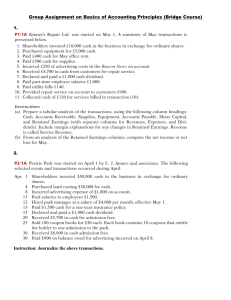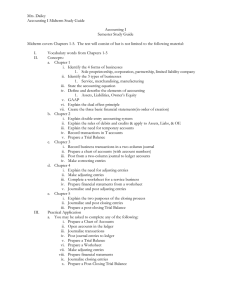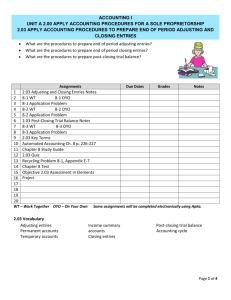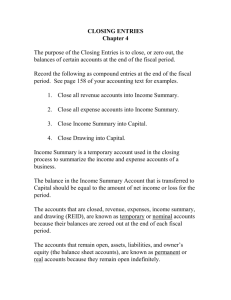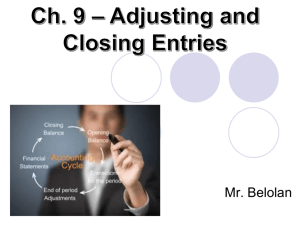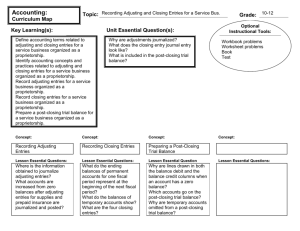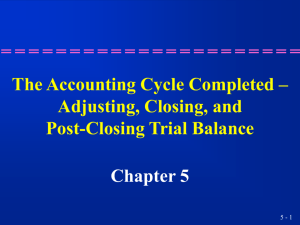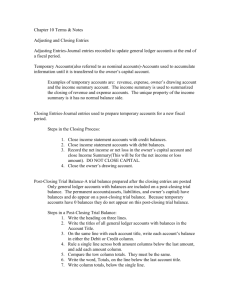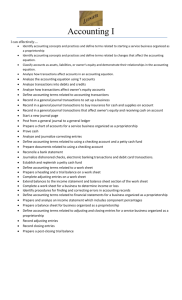Chapter 8
advertisement
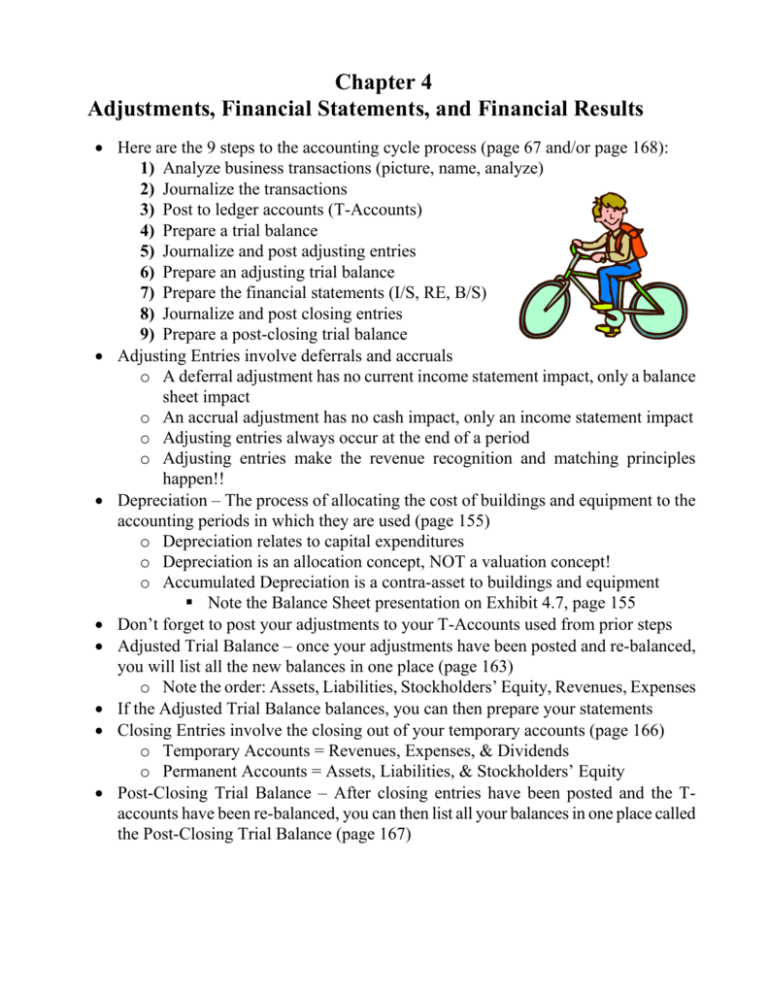
Chapter 4 Adjustments, Financial Statements, and Financial Results Here are the 9 steps to the accounting cycle process (page 67 and/or page 168): 1) Analyze business transactions (picture, name, analyze) 2) Journalize the transactions 3) Post to ledger accounts (T-Accounts) 4) Prepare a trial balance 5) Journalize and post adjusting entries 6) Prepare an adjusting trial balance 7) Prepare the financial statements (I/S, RE, B/S) 8) Journalize and post closing entries 9) Prepare a post-closing trial balance Adjusting Entries involve deferrals and accruals o A deferral adjustment has no current income statement impact, only a balance sheet impact o An accrual adjustment has no cash impact, only an income statement impact o Adjusting entries always occur at the end of a period o Adjusting entries make the revenue recognition and matching principles happen!! Depreciation – The process of allocating the cost of buildings and equipment to the accounting periods in which they are used (page 155) o Depreciation relates to capital expenditures o Depreciation is an allocation concept, NOT a valuation concept! o Accumulated Depreciation is a contra-asset to buildings and equipment Note the Balance Sheet presentation on Exhibit 4.7, page 155 Don’t forget to post your adjustments to your T-Accounts used from prior steps Adjusted Trial Balance – once your adjustments have been posted and re-balanced, you will list all the new balances in one place (page 163) o Note the order: Assets, Liabilities, Stockholders’ Equity, Revenues, Expenses If the Adjusted Trial Balance balances, you can then prepare your statements Closing Entries involve the closing out of your temporary accounts (page 166) o Temporary Accounts = Revenues, Expenses, & Dividends o Permanent Accounts = Assets, Liabilities, & Stockholders’ Equity Post-Closing Trial Balance – After closing entries have been posted and the Taccounts have been re-balanced, you can then list all your balances in one place called the Post-Closing Trial Balance (page 167)
